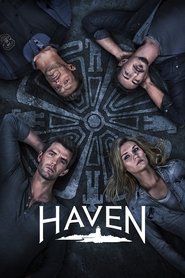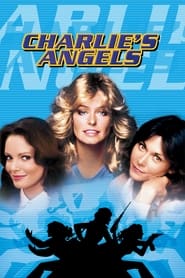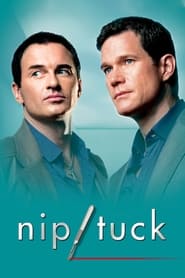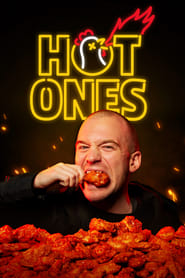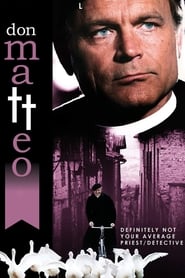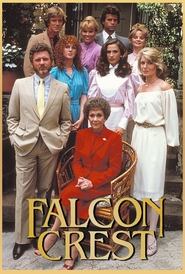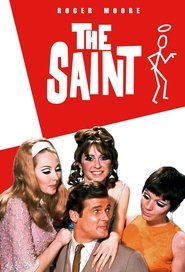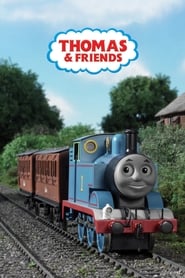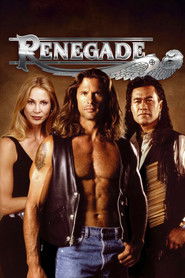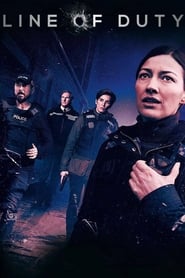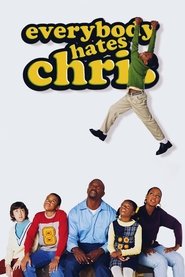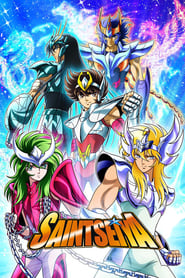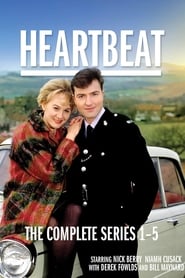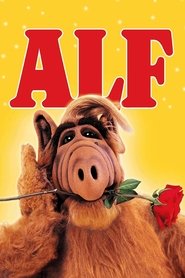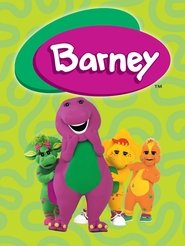Popular Action Adventure TV Shows on Plex - Page 2
-
Haven
2010
Haven
2010
star 7.5FBI agent Audrey Parker arrives in the small town of Haven, Maine to solve a murder and soon discovers the town's many secrets—which also hold the key to unlocking the mysteries of her lost past. -
Charlie's Angels
1976
Charlie's Angels
1976
star 6.7Beautiful, intelligent, and ultra-sophisticated, Charlie's Angels are everything a man could dream of... and way more than they could ever handle! Receiving their orders via speaker phone from their never seen boss, Charlie, the Angels employ their incomparable sleuthing and combat skills, as well as their lethal feminine charm, to crack even the most seemingly insurmountable of cases. -
Nip/Tuck
2003
Nip/Tuck
2003
star 7.2Hotshot plastic surgeons Dr. Sean McNamara and Dr. Christian Troy experience full-blown midlife crises as they confront career, family and romance problems. -
Hot Ones
2015
Hot Ones
2015
star 7.2The show with hot questions and even hotter wings invites a famous guest over to eat and then interviews them while they're struggling through the heat. -
Father Matteo
2000
Father Matteo
2000
star 6.3Don Matteo is a thoroughly ordinary Catholic priest with an extraordinary ability to read people and solve crimes. He’s a parish priest who never met an unjustly accused person he didn’t want to help. -
Falcon Crest
1981
Falcon Crest
1981
star 5.6Falcon Crest is an American primetime television soap opera which aired on the CBS network for nine seasons, from December 4, 1981 to May 17, 1990. A total of 227 episodes were produced. The series revolves around the feuding factions of the wealthy Gioberti/Channing family in the Californian wine industry. Jane Wyman starred as Angela Channing, the tyrannical matriarch of the Falcon Crest Winery, alongside Robert Foxworth as Chase Gioberti, Angela's nephew who returns to Falcon Crest following the death of his father. The series was set in the fictitious Tuscany Valley northeast of San Francisco. -
Cheyenne
1955
Cheyenne
1955
star 6Cheyenne Bodie was a big man, a former army scout who went west after the American Civil War and drifted from job to job, here a cowboy, there a lawman, and always a larger-than-life hero. CHEYENNE is an American western television series of 108 black-and-white episodes broadcast on ABC from 1955 to 1963. The show was the first hour-long western, and in fact the first hour-long dramatic series of any kind, with continuing characters, to last more than one season. It was also the first series to be made by a major Hollywood film studio which did not derive from its established film properties, and the first of a long chain of Warner Brothers original series produced by William T. Orr. -
Degrassi
2001
Degrassi
2001
star 7.5The life of a group of adolescents going through the trials and tribulations of teendom at Degrassi Community School. -
The Saint
1962
The Saint
1962
star 7.4Simon Templar is The Saint, a handsome, sophisticated, debonair, modern-day Robin Hood who recovers ill-gotten wealth and redistributes it to those in need. -
The Beverly Hillbillies
1962
star 6.9Jed Clampett's swamp is loaded with oil. When a wildcatter discovers the huge pool, Jed sells his land to the O.K. Oil Company and at the urging of cousin Pearl, moves his family to a 35-room mansion in Beverly Hills, California. -
Thomas & Friends
1984
Thomas & Friends
1984
star 6.8Thomas & Friends is a British children's television series, which had its first broadcast on the ITV network on 4 September 1984. It is based on The Railway Series of books by the Reverend Wilbert Awdry and his son, Christopher Awdry. These books deal with the adventures of a group of anthropomorphised locomotives and road vehicles who live on the fictional Island of Sodor. The books were based on stories Wilbert told to entertain his son, Christopher during his recovery from measles. From Series one to four, many of the stories are based on events from Awdry's personal experience. -
Renegade
1992
Renegade
1992
star 6.7Framed for murder, Detective Reno Raines becomes a fugitive bounty hunter who fights crime while trying to clear his name. His troubles began after he testified about police corruption, leading Lt. Donald Dixon to set him up. -
Line of Duty
2012
Line of Duty
2012
star 8.2A drama about the investigations of AC-12, a controversial police anticorruption unit. -
Everybody Hates Chris
2005
star 8.1Chris is a teenager growing up as the eldest of three children in Brooklyn, New York during the early 1980s. Uprooted to a new neighborhood and bused to a predominantly white middle school two-hours away by his strict, hard-working parents, Chris struggles to find his place while keeping his siblings in line at home and surmounting the challenges of junior high. -
Saint Seiya
1986
Saint Seiya
1986
star 8.5Ages ago, the goddess Athena was served by fighters called Saints who channeled the power of the Cosmos within them. Now a youth named Seiya has trained to become a Saint himself by earning the mystical Cloth of Pegasus. He is joined by other Saints with Cloths of their own to fight for Athena. -
Anger Management
2012
Anger Management
2012
star 6.2Charlie is a non-traditional therapist specializing in anger management. He has a successful private practice and he performs pro bono counseling for an inmate group at a state prison. Prior to his career as a therapist, he was a major league baseball player whose career was put on the shelf for good by his own struggle with anger issues. -
Dragnet
1951
Dragnet
1951
star 6.4Follows the cases of a dedicated Los Angeles police detective, Sergeant Joe Friday, and his partners. The show takes its name from the police term "dragnet", meaning a system of coordinated measures for apprehending criminals or suspects. -
Heartbeat
1992
Heartbeat
1992
star 7.1Set during the 1960s in the fictional North Yorkshire village of Aidensfield, this enduringly popular series interweaves crime and medical storylines. -
ALF
1986
ALF
1986
star 7.7A furry alien wiseguy comes to live with a terran family after crashing into their garage. -
Barney & Friends
1992
Barney & Friends
1992
star 5.7Barney & Friends is an American children's television series aimed at children from ages 2 to 5. The series, which first aired on April 6, 1992, features the title character Barney, a purple anthropomorphic Tyrannosaurus rex who conveys educational messages through songs and small dance routines with a friendly, optimistic attitude.
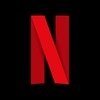 Netflix
Netflix
 Amazon Prime Video
Amazon Prime Video
 Apple iTunes
Apple iTunes
 Apple TV Plus
Apple TV Plus
 Disney Plus
Disney Plus
 Google Play Movies
Google Play Movies
 Paramount Plus
Paramount Plus
 Hulu
Hulu
 HBO Max
HBO Max
 YouTube
YouTube
 fuboTV
fuboTV
 Peacock
Peacock
 Peacock Premium
Peacock Premium
 Amazon Video
Amazon Video
 The Roku Channel
The Roku Channel
 AMC+
AMC+
 Kocowa
Kocowa
 Hoopla
Hoopla
 The CW
The CW
 Vudu
Vudu
 Starz
Starz
 Showtime
Showtime
 PBS
PBS
 Pantaflix
Pantaflix
 FXNow
FXNow
 Tubi TV
Tubi TV
 Kanopy
Kanopy
 Comedy Central
Comedy Central
 Crunchyroll
Crunchyroll
 Microsoft Store
Microsoft Store
 Redbox
Redbox
 Sun Nxt
Sun Nxt
 ABC
ABC
 DIRECTV
DIRECTV
 Crackle
Crackle
 Fandor
Fandor
 Plex
Plex
